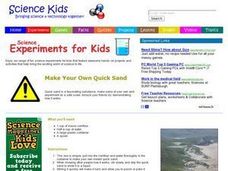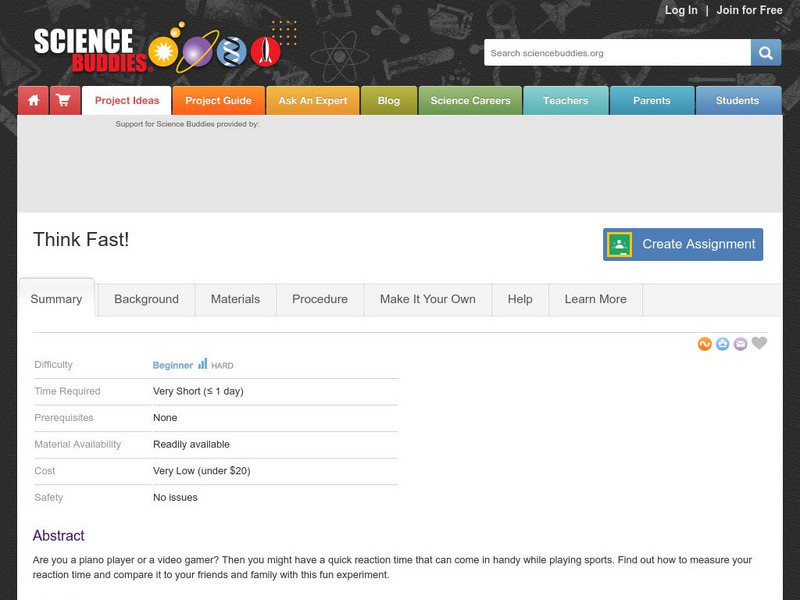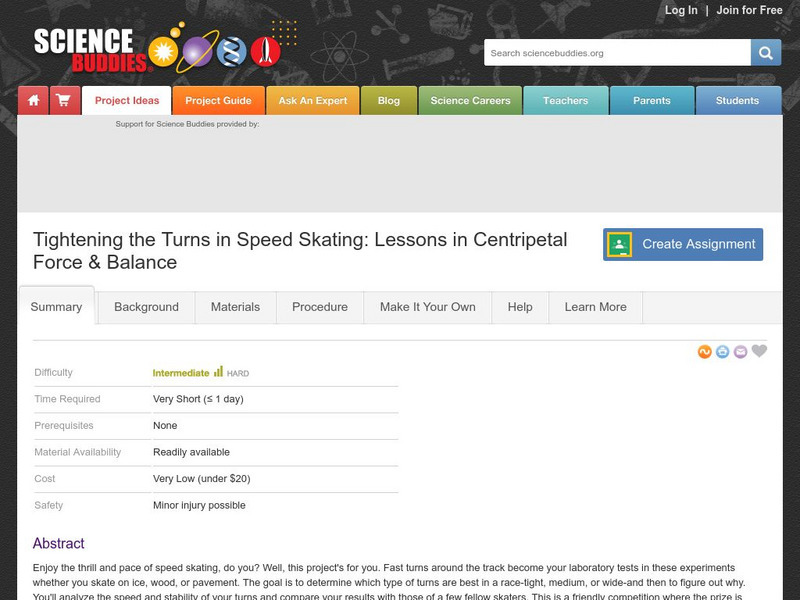Curated OER
Attract or Repel?
Opposites attract with a fun science experiment on magnets. With a short paragraph on background knowledge, the lab sheet prompts third and fourth graders to choose which pairs of magnets will attract, and which pairs will repel. A...
NOAA
Plate Tectonics II
Mid-ocean ridges, rift valleys, island arcs, mountain ranges, earthquakes, volcanoes ... there are so many features associated with plate tectonics. The 14th installment of a 23-part NOAA Enrichment in Marine sciences and Oceanography...
Curated OER
A County Fair Can Lead to an Exploration of Math, Science, and Literature
A county fair can provide an educational experience for students.
Curated OER
Bicycle Wheel Gyro
Using a bicycle wheel and a rotating stool, young physicists experiment with angular momentum. This is a simple, fun, and educational activity that demonstrates a foundational concept. If you can secure the materials, it is definitely...
Curated OER
Make Your Own Quick Sand
Young scholars create a quick sand model using cornflour and water. In this earth science lesson, students explain why stirring the mixture quickly makes it thick but the opposite happens when you stir it slowly.
Curated OER
Why Do We Have Night?
Learners engage in a fun, creative way to discover how the Earth moves. This lesson helps students explain why there is day and night. It can also create curiosity to further study the solar system and eclipses!
Curated OER
Bobsled Challange
Students investigate the effects of materials on the friction between a "bobsled" and the track. They explore the effects of weight on the motion of the bobsled. Students design a bobsled for either fast or slow movement. They discuss...
Science Fun for Everyone
Science Fun: Balloon Pop! Not!
In this fast and fun science experiment video, we will teach you how to stick a needle in a balloon without popping the balloon. Video tutorial included.
Science Buddies
Science Buddies: Think Fast!
Are you a piano player or a video gamer? Then you might have a quick reaction time that can come in handy while playing sports. Find out how to measure your reaction time and compare it to your friends and family with this fun experiment.
Science Buddies
Science Buddies: Tightening the Turns in Speed Skating
Fast turns around the track can become your laboratory tests in these experiments, whether you skate on ice, wood, or pavement. The goal is to determine which type of turns are best in a race - tight, medium, or wide - and then to figure...











